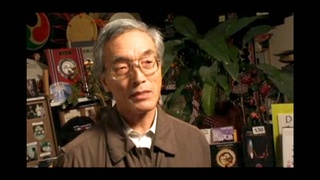Interviews
Bringing Japanese American taiko to Japan
In 1987, we went to Nagasaki where we stayed with Ondekoza for a few weeks and played with them in joint performance. And it was there in Japan playing juxtaposed to Ondekoza that it’s like, “Wow, we are really different,” and “Wow, we do have a different voice.” And to hear the response from the Japanese audience and hearing English come out of our mouths—“Oh, you don’t speak Japanese,” and “Oh, what kind of drums are those?” We insisted on taking our wine barrel-made Taiko to Japan as a part of like, “See? This is what we do. This is what Japanese Taiko has inspired here in the United States.” It was very important for us to show that to the Japanese public. So to receive their very favorable response from the Japanese audience to say, “Yes, that’s Taiko but really different. Your music is different. But yes, it’s Taiko.”
Date: January 26, 2005
Location: California, US
Interviewer: Art Hansen, Sojin Kim
Contributed by: Watase Media Arts Center, Japanese American National Museum





